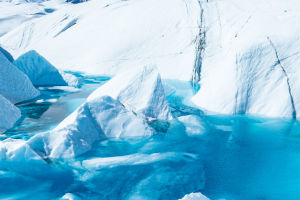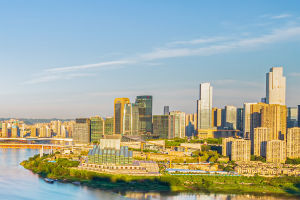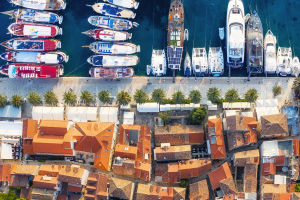Alaska boasts more national parks than all of the states on the East Coast of the United States combined. While many are familiar with Denali and Glacier Bay, the state's other national parks are often overlooked and underrated, resulting in low visitation rates.
1. Denali National Park & Reserve
It is a unique destination as cars are not allowed within its borders. Visitors must instead rely on park shuttles and tour buses to explore the only road in the park. Travelers on a tight schedule can follow the bus for a day to see much of the scenery and wildlife. However, for a more immersive experience, it's recommended to skip the main road and instead hike or camp within this sparsely populated rural land. Before embarking on any backcountry adventures, it's important to obtain maps with marked terrain.
2. Wrangell-St. Elias National Park and Preserve
It is the largest national park in the United States and joins three adjacent parks - Glacier Bay National Park and Preserve in southeast Alaska, Tatshenshini-Alsek Provincial Park in British Columbia, and Kluane National Park in Canada's Yukon Territory - all of which are listed as UNESCO World Heritage sites. While Wrangell-St. Elias is off the beaten path in Alaska, visitors can drive right into the park. Guided glacier hikes and ice slope climbs are available locally.
3. The Klondike Gold Rush Historic Park
It offers a three to four-day hike that follows the route of the 1898 gold prospectors from sea level on the Alaskan Panhandle coast up the Chelcu Trail into Canada. This hike requires a good deal of physical strength and endurance. The route is clearly marked, with occasionally designated campsites, and joint monitoring by Parks Canada and NPS patrol riders. Only a limited number of hikers are allowed on the summit each day, so it's important to have a pass and a campsite reservation in advance.
Getting to and from the trailhead also requires some planning - Chelco starts a few miles outside of Skagway, passes Dyea Road, and ends miles from the Klondike Highway at Bennett Lake. Travelers often return to Skagway on the White Pass Yukon Railroad, although a more affordable option is to hike to the road along the railroad and take a bus from there.
4. Gates Of The Arctic National Park
It is considered one of the coolest parks in America, and its "gates" are two mountains - Frigid Crags and Boreal Mountain - located on either side of the Koyukuk River, forming a massive entrance. There is no land access to the Arctic Gate, so most visitors fly in by air cab from Bettles, Coldfoot, or Kotzebue. Hiking in from the Dalton Highway, which runs parallel to the park's eastern boundary, is also an option. Once inside the park, visitors can explore most of the Brooks Range, but it's important to check the NPS trip planning guide to ensure your safety as well as the safety of local wildlife.
5. Glacier Bay National Park and Preserve
It is known for its impressive glaciers and diverse marine life. Unlike most national parks in the United States, visitors to Glacier Bay usually arrive by sea. Large cruise ships travel to and from nearby Juneau, tour boats make short, same-day trips to the park, private boats have free access, and many visitors arrive by kayak.
Alaska's national parks offer a diverse array of natural wonders and outdoor recreation opportunities, and they are well worth exploring. Be sure to plan, stay safe, and enjoy the stunning landscapes and wildlife that Alaska has to offer.


